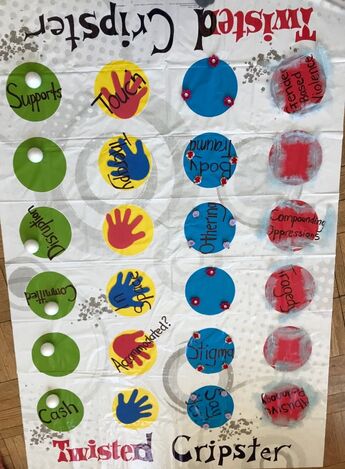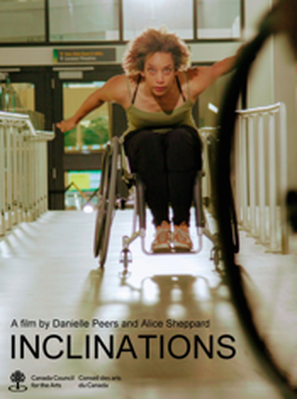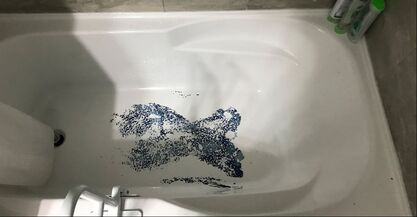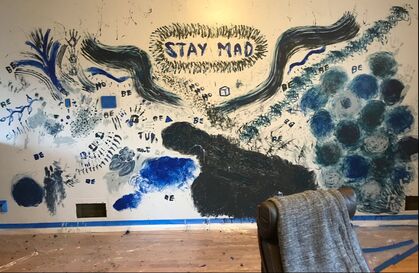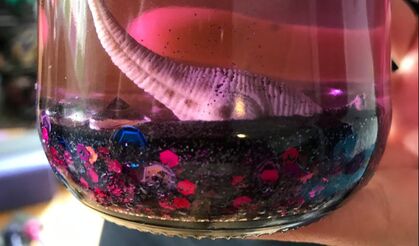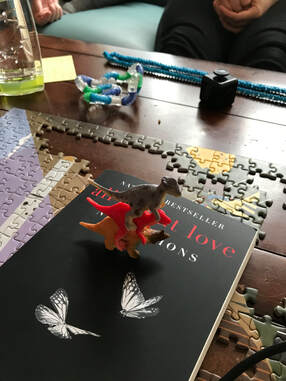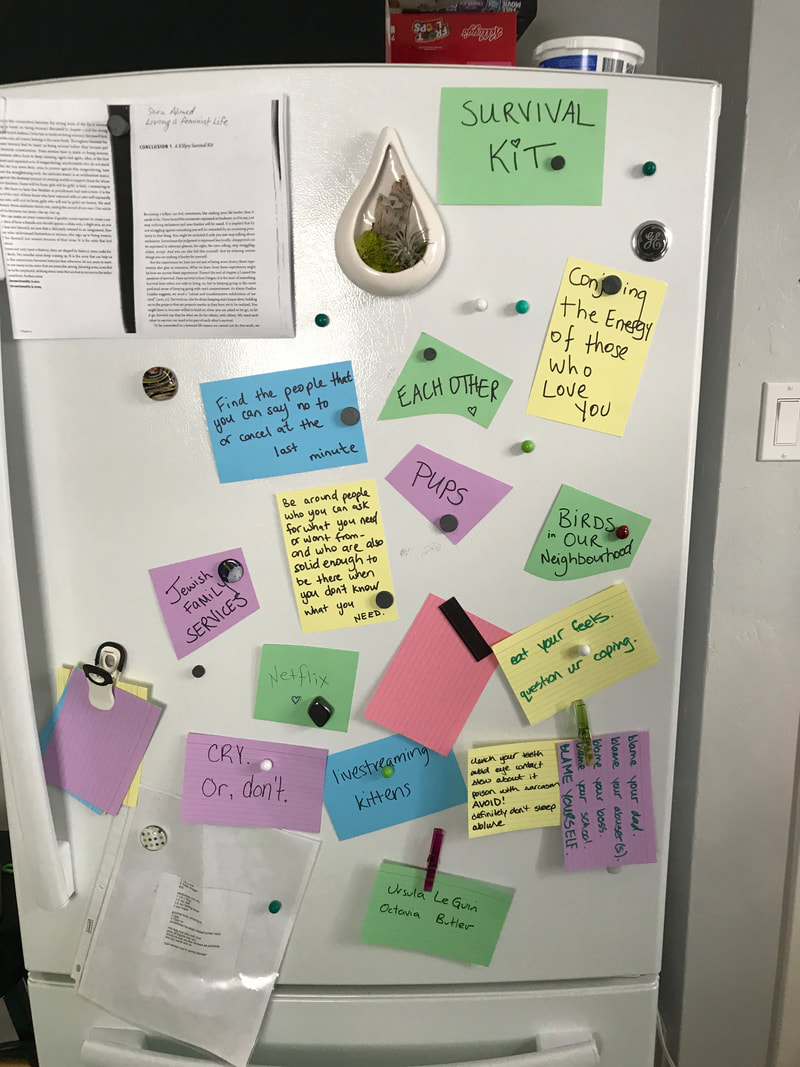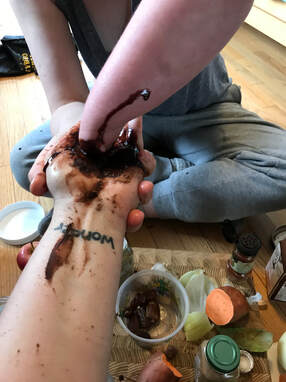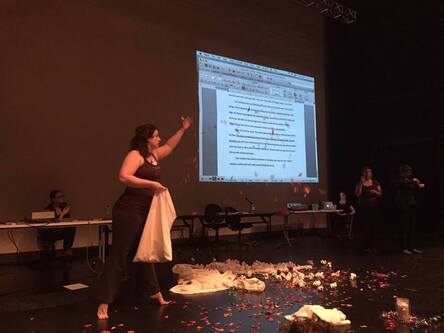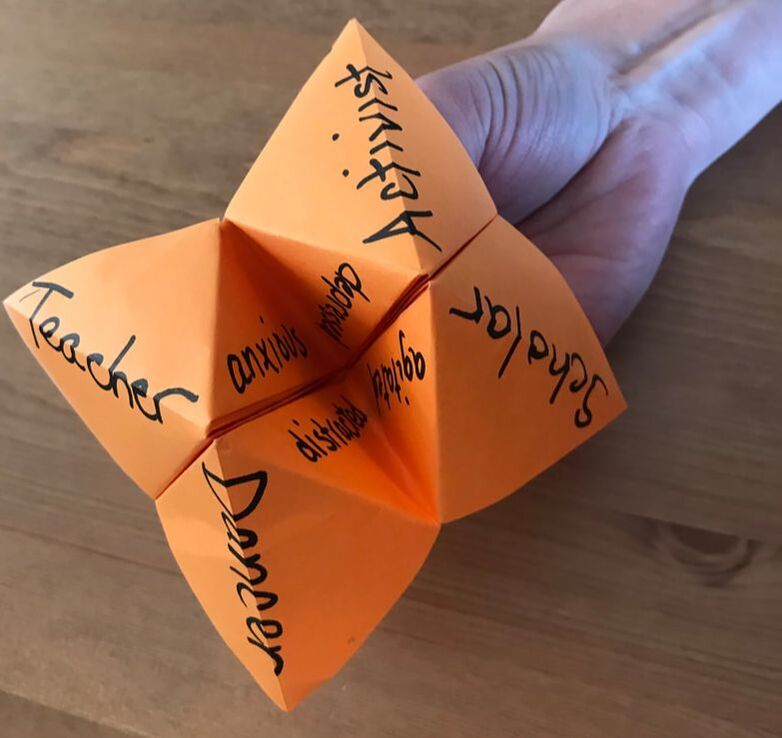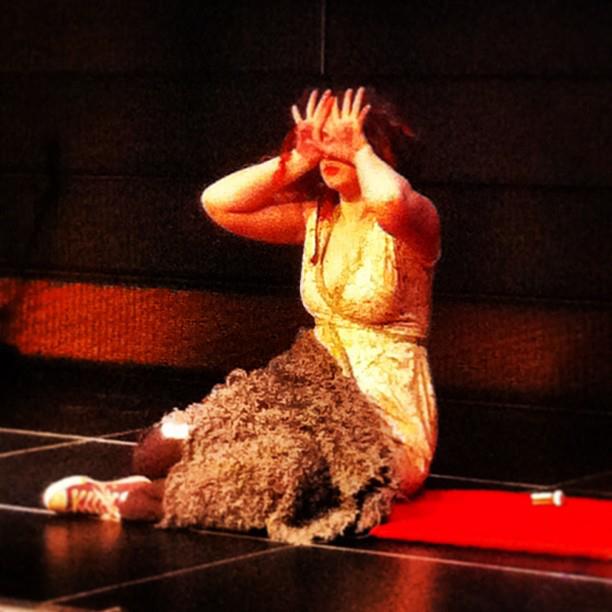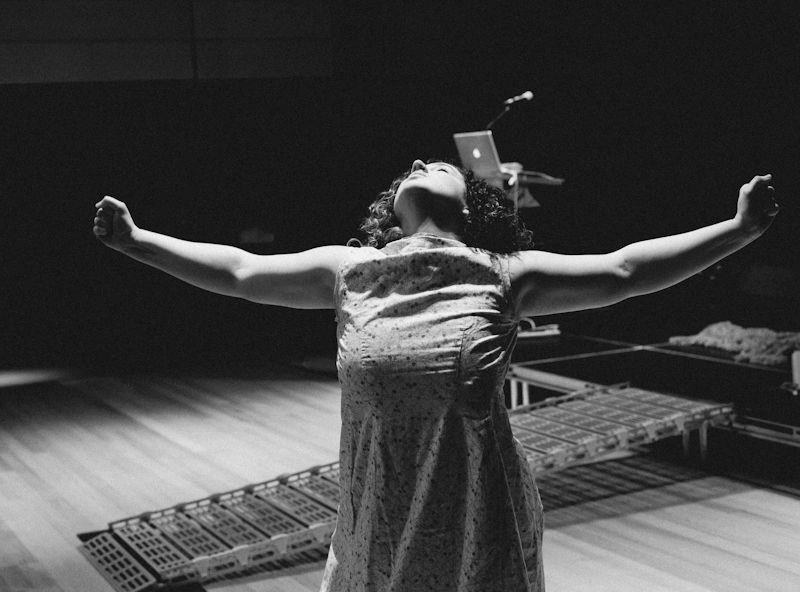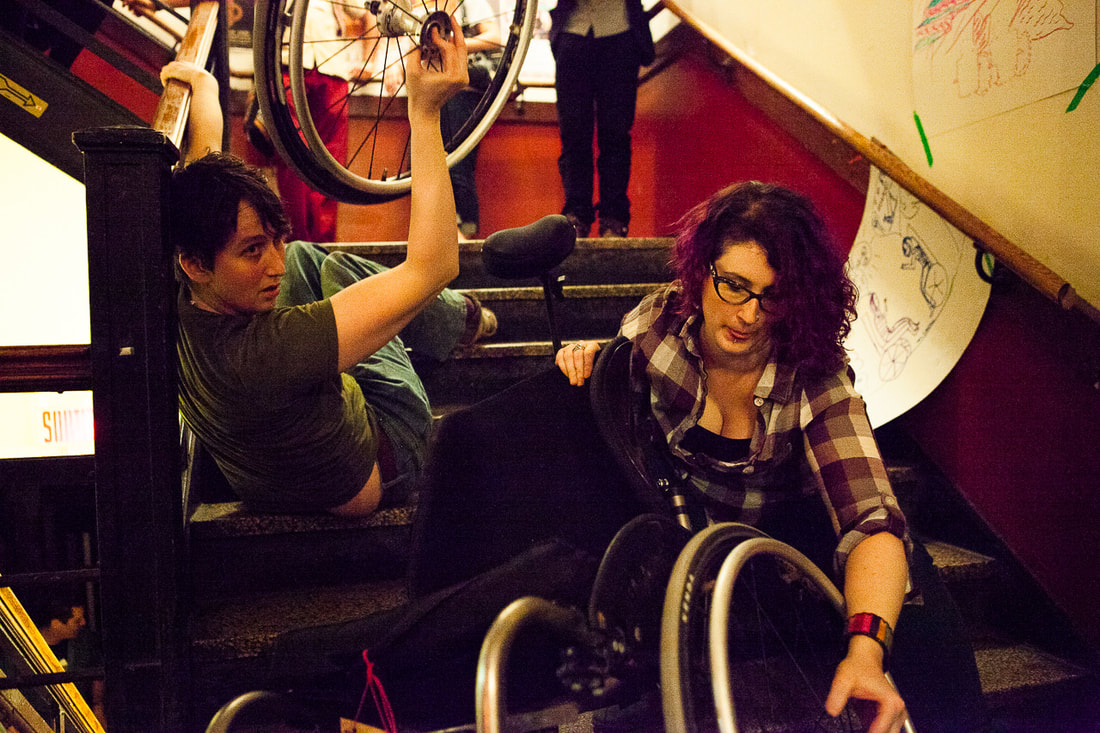|
Tactile Twisted Cripster (2019)
with Bojana Coklyat and Danielle Peers Crip Mad interactive performance installation Part of Crip Imponderabilia - Exhibition - New York University http://cripimponderabilia.com/tactile-twisted-cripster/ “Tactile Twisted Cripster” is a collaborative endeavor to think disability and Mad barriers, access, and play together in the form of an interactive movement-based version of the classic game Twister. This interactive installation brings together a tactile Twister mat developed by Bojana Coklyat, with Lindsay Eales and Danielle Peers’ concept of “Twisted Cripster,” which mobilizes Twister as metaphor for the contortions that disabled and Mad artists are often forced to undertake when trying to develop a career in the arts. Through this collaborative melding of these works, the three artists amplified their versions of the game to include a three-dimensional playing space, as well as a tactile spinner board. Our intention is create a fun, accessible and interactive way to think and move through some of the barriers that disabled and Mad Artists face while pursuing a career in the arts. We also hope the game shows how interdependence and collaboration are two strategies that make the journey more survivable and playful! |
|
Inclinations (2018)
with Danielle Peers, Alice Sheppard, and Lisa Neidermeyer Dance-on-video. Canada: Disability Dance Works. Funded by the Canada Council for the Arts and distributed by VTape. Festivals screenings in Edmonton, AB; Vancouver, BC; Toronto, ON; Halifax, NS; Austin, TX; Chicago, IL: San Fransisco, CA; Washington, DC. Festival Honors (Official Selections): Superfest International Disability Film Festival; Northwestfest; Experimental, Dance & Music Film Festival; F-O-R-M Festival of Recorded Movement. Featured on Alaskan Airlines Role: process doula, production assistant, choreographic support, research-creationist In this project we asked how a ramp wide enough for multiple wheelchair users—at the entrance of a university’s “Social Street”—can enable novel movement aesthetics, methodologies, and pleasures: new ways of embodying and enacting accessible architecture. It mobilizes the embodied presence and capacities of four disabled dancers of diverse racial and gendered identities who use wheelchairs, researching what becomes possible when this existence and co-existence is choreographed into movement spaces. A key research question was methodological: how can we fully embed intersectional disability justice (Berne, 2015) not only as a theoretical lens, but also as a methodological imperative? As iterative, co-constructed research-creation projects often do, the resulting dance on (ramp-on-wheels-on) film evolved to engage a broad range of themes, including intersectionality, eugenics, ableism, racism, queer desire, crip community, disability aesthetics, and the beauty and generativity of the disabled moving body. |
|
|
Mad Home (2017)
with dales laing, Alexis, Sarah Hamill, and Nathan Fawaz Mad Interactive Performance Art and Installation Edmonton, AB Online artifact - www.madhomeproject.weebly.com Text-based artifact - PhD dissertation chapter 4 - https://doi.org/10.7939/r3-hk8v-9m36 This cycle is one of making Mad homes, in our bodies and our worlds. It is one of holding our trauma and darkness and sharp edges gently, preciously, because it is the sand and layers upon layers of nacre that make the pearl. It is one of calling us in, to new relations with madness, trauma, anti-pathologization, multiplicity, artful living, participatory connection, and invitatory engagement. It is one of shaping spaces, of making space. My dear friend Nathan, a collaborator on one of these episodes and one of the guardians of this cycle, asked me this: “Did you know that those physics people have found evidence of life in the vacuum of black holes in outer space? Of course you did.” This work is made of this same stardust. It is the flickering life in the vacuum of a star’s death, the ‘you belong here, even when you don’t feel you belong elsewhere,’ making spaces for survival and flourishing (which includes spaces for dying, or wanting to die, knowing death and life are not so far apart). This cycle is also, above all, a love story. A love story to myself, and to my communities, and to all of the thinkers and makers and doers that have come before, are here now, and will join in the future. Perhaps you will find a home or two here as well. Welcome. |
|
Loose Leaf (2015-present)
Multi-episode multidisciplinary performance art Choreographed/composed/edited/performed by Lindsay Eales Performance art episodes - performed in Canmore, AB; Montreal, QC; Bogota, Columbia Performative writing episode - https://doi.org/10.15353/cjds.v5i3.297 Text-based episode - PhD dissertation chapter 3 - https://doi.org/10.7939/r3-hk8v-9m36 I began my research exploration of madness and performance by creating an autoethnography. Pause. Let the cursor blink. This singular, tidy, chronological sentence doesn’t do it. The iterative (think: episodes, cycles). The reflective (think: mirrors, prisms, crystals, shiny things, my face in a handful of marbles). The multiple (think: personalities, subjectivities, stories, repetitions, perseverations, representations, personas). The overlapping (think: temporalities, voices, skins). The interwoven (think: warp and weft weave together a new being, different from each individual string). The mosaic (think: fragments, shards, collage, the bricoleur, scratchy grout that rubs hands raw). The contextual (think: who am I calling into this dialogic relationality? reader, listener, witness, accomplice, fellow human, being Mad: who am I to me next to you? What does this space, time, relationship allow?) The conflicting (think: desires, intentions, effects, the I’s I want and the I’s I don’t, constructing new pasts, dismantling old futures). The process-product-process-product-process-product-process-and-so-it-goes-until-they-are-the-same-but-not. Dried glue peeled off my hand that takes my million skin cells with it. And so, this work is more than one. It is a series of Mad episodes in a cycle. |
|
Swallowed the Fly (2014)
Mad Dance/Performance Art Choreographed and performed by Lindsay Eales Performed in Edmonton, AB; Calgary, AB; Montreal, QC. Earlier version commissioned by Stage Left Productions Funded in part by the Edmonton Art Council There once was a woman who swallowed a fly I don’t know why she swallowed the fly Perhaps she’ll die from the anti-epileptics for the depression from cutting the meds due to the seizures from the anti-psychotics which required anti-histamines for the throat swelling throughout the hypomania from the wrongly prescribed steroids for the allergic reaction from the anti-psychotics or the hypomania and the convulsions from the anti-depressants for the depression caused by the lack of serotonin caused by the childhood trauma caused by the father complex caused by the phlegm and liver Qi stagnation caused by the moral turpitude caused by the processed foods caused by the sedentary lifestyle caused by the poverty She swallowed the spider to catch the fly I dunno why she swallowed a fly Perhaps she’ll die |
|
#IAMCHAIR (2014)
with Encuentro’s Disability and Performance Working Group - convened by Arseli Dokumaci and Kim Sawchuk; and with co-creators Barak adé Soleil, Danielle Peers, Laurence Parent, Ashley McAskill, Kelsie Acton, Carola García López, Heather Vrana, Janet Gibson, Jennifer Jimenez, Margaret Ames, Maria Schirmer, Stephen Sillett, Véro Leduc, Yvonne Schmidt, Kody Rogers Hall, Tamar Tembeck, Faye Ginsberg collaborative multidisciplinary disability performance art protest/intervention (including stair crawl protest, elevator fund, manifesto with demands for conference organizers, interactive performance installation) Performed at Hemispheric Institute’s Encuentro Performance and Politics 2014 Conference, Montreal, QC. hemisphericinstitute.org/en/enc14-manifestos/item/2597-iamchair.html hemisphericinstitute.org/en/enc14-manifestos/item/2600-manifestations-performing-disability-work-group-statement.html https://sw-ke.facebook.com/hashtag/iamchair?source=feed_text&epa=HASHTAG |
Also discussed in Chapman, O., & Sawchuk, K. (2015). Creation-as-research: Critical making in complex environments. Review d’art canadienne/Canadian Art Review, 40(1), 49-52. https://doi.org/10.7202/1032753ar
|
|
Other-wise (2013)
with Danielle Peers Dance-based video poetry on crip/Mad/queer identities, experiences, movement, and relationships. Audio described by Joshua St. Pierre One of four movement-based vignettes collectively named inter-relationcrips, commissioned by Stage Left Productions. Special thanks to Markus Alexander. |
|
Arts-Based Research Outputs
|
Moving To Breathe (2018)
English promo video describing our major learnings from the Moving to Breathe, Breathing to Move dance and choir research project. Funded by Muscular Dystrophy Canada and Mitacs. Role: Occupational therapy, program design, and arts-based research consultant |
|
|
(Dis)quiet in the Peanut Gallery (2013)
Video of a performance ethnography about practicing and performing social justice through integrated dance. In collaboration with Alex Sutherland, Alison Neuman, Anna Schuurman, Claire Casavant, Ian Gordon, Iris Dykes, Kasia Niewinska, Kaylee Gloeckler, Kelsie Acton, Laurel Sublime, Lindsay Eales and Roxanne Ulanicki. Original music by Jermaine Curtis Videography by Danielle Peers Editing by Lindsay Eales Conducted in partial fulfillment of Lindsay Eales' Masters' of Arts degree. |
|
